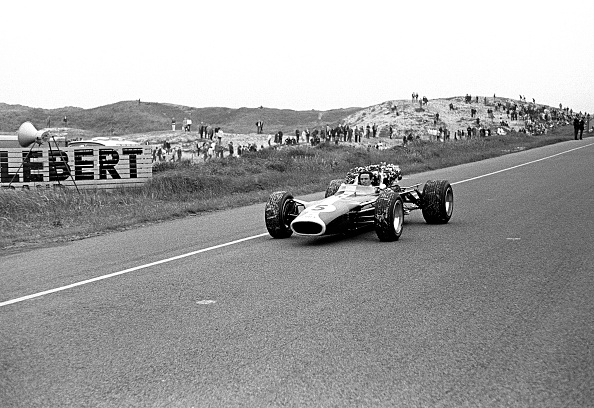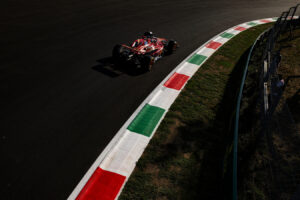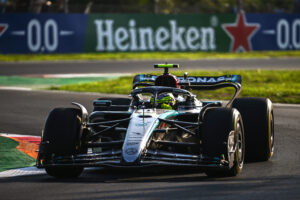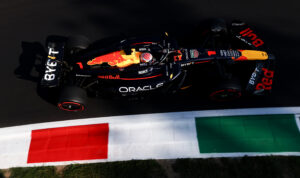LWOS trawls through the archives to chronicle some of the memorable moments from the Dutch Grand Prix’s long history.
Zandvoort was largely a mainstay on the F1 calendar from its debut in 1952 until 1985. The scene of some horrific – and sometimes fatal – accidents, Zandvoort had been maligned by drivers for its lack of safety, but has often been regarded as a favorite with F1 fans. The fast, challenging course has been the scene of some dramatic, exciting, and memorable moments that are ingrained in the history of Formula 1.
Clark gives car and engine memorable debut victory
In 1967, Zandvoort was the setting for a milestone in the history of Colin Chapman’s Team Lotus, and a momentous occasion for Ford. The team’s then-current model, the 25, had made them World Champions, but now running in its sixth season, Chapman set about its replacement – the 49. The 25 had accommodated various engines, including BRM and Climax, but the 49, however, was designed to fit the brand-new Ford Cosworth DFV (short for Double Four Valve), and the team arrived in Holland ready to take the covers off their new challenger.
Drivers Jim Clark and Graham Hill would have mixed fortunes in qualifying, with Clark qualifying a lowly 8th, due to mechanical issues and his unfamiliarity with the car. Hill, however, had been the driver chosen to test the 49, and his prior knowledge helped him duly qualify on Pole Position, but the fortunes would be reversed come race day.
Hill led away from Jack Brabham, but on lap 11, gearbox and engine issues put him out of contention. Being the genius that he was, Clark did not need long to become accustomed to the car, and only a handful of laps after Hill’s retirement, he overtook Brabham for the lead, and would stay there until the end, taking the chequered flag some 23 seconds ahead.
The 49 would take Hill to the Championship in 1968 and the DFV would become a mainstay in motorsport over the next two decades, powering title-winning cars in Formula 1 and IndyCars.
The biggest little team gives Hunt his first rush
1975 would see a wet-dry race that culminated in a coming-of-age performance from the roguish and charismatic James Hunt. Driving for the popular Hesketh Racing team – who dubbed themselves ‘the biggest little racing team in the world’ – Hunt qualified 3rd with the Ferraris of Niki Lauda and Clay Regazzoni 1st and 2nd.
With no chance of times changing from the Friday session because of the weather, Saturday was spent by drivers getting in some extra practice, but Hunt’s day would end abruptly after the metering unit on his Hesketh broke. Zandvoort did not run a Sunday warm-up session prior to the race, therefore the metering unit would have failed during the race had Hunt not gone out on Saturday.
The rain continued to pour on Sunday morning, with the race eventually starting with cars on wet weather tires. Lauda led with the Shadow of Jean-Pierre Jarier in close pursuit, with the rain soon disappearing. Hunt made the switch to dry tires and was soon catching the leading pair, taking the lead on lap 15. Jarier’s spirited challenge would end on lap 43 after a puncture caused a spin, leaving Lauda and Hunt dueling for the victory. Hunt held his nerve to hold-off Lauda for his first win in F1, and the only one Hesketh would earn. The race has gone down as one of the first significant moments in the rivalry between Hunt and Lauda, which would become the basis of the 2013 Hollywood film Rush.
Villeneuve’s rubber soul
1979 was the epitomical year of the career of French-Canadian Gilles Villeneuve. The most naturally-gifted racing driver on the grid and with a car good enough for glory, Villeneuve possessed an emotionally-charged, all-or-nothing spirit which was also a factor in what cost him the Drivers’ title. In an interview with LWOS, Villeneuve’s team-mate Jody Scheckter told me: “He took a lot of risks, and the way he drove could hurt the car. In Monaco, he would drive flat out over the bumps, and he then broke an axle on the car and I was able to beat him.”
Arriving in Zandvoort, Villeneuve needed a good finish to maintain his title chances, and he got a dream start. Starting from 5th, Villeneuve took the lead from Alan Jones on lap 11, with Scheckter dropping to the back of the order. Villeneuve led until lap 47 when he spun, handing the lead back to Jones. Four laps later he spun again, this time due to his left rear tire blowing out. Villeneuve kept the car’s engine going, reversed back onto the circuit, and proceeded to limp around the rest of the lap, effectively on two wheels, as the now-shredded left rear hoisted the right front off the asphalt. Villeneuve would manage to drive the car back to the pits, with the left rear wheel hanging from the suspension. Scheckter would manage to work his way through the pack and finish 2nd, and would win the title at the next round in Italy.
Lauda’s final win
Niki Lauda confirmed his renaissance in Grand Prix racing by pipping team-mate Alain Prost to the World Championship by just half a point in 1984, two years after returning from retirement. 1985 proved to be a difficult final year in F1, however, as the veteran Austrian retired from all bar two races leading up to Holland, by which time he had confirmed he was retiring from the sport for the second time.
Lauda qualified 10th, and his charge would be aided by polesitter Nelson Piquet, as well as Thierry Boutsen, stalling at the start. Lauda would pit for fresh tires before those around him would, giving him the lead when others did so. Prost would suffer problems when he pitted, enabling Lauda to open up a margin. Prost dispatched the Lotus of Ayrton Senna and went off in pursuit of Lauda. The pair would race for the win, but Lauda held on to claim his final ever F1 win. Prost would go on to win the Drivers’ title.
2022?
With its planned return halted due to the COVID-19 pandemic, the Dutch Grand Prix made a grand reappearance last year, with home favorite Max Verstappen taking victory in front of his jubilant orange-clad supporters. Can Verstappen and the class of ’22 make this year’s trip to Zandvoort another classic?






